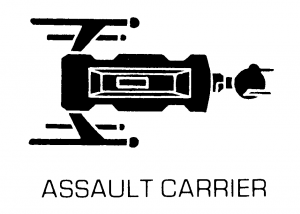Traveling through hyperspace ain’t like dusting crops, boy!
While a little out of context (Han was actually referring to astrogation calculations), the quote still applies – faster than light (FTL) travel is not just a walk in the park.
In this post, I want to look at a mechanic for FTL induced illness, which I’ll be calling Void Sickness. The name comes because I created this mechanic for my Star Frontiers games where FTL travel is accomplished by traveling through “The Void” or “Void Jumping”. In that game, you accelerate up to speed (1% the speed of light) and then make a nearly instantaneous transition into and out of the Void to cross many light years. The rules are a little vague on the actual duration but I’ve always used 1 second per light year. When you re-emerge you are in a new star system (hopefully your destination if you got the astrogation correct).
But what happens physiologically when you make the transition? You are entering, even if it is briefly, a dimension your body wasn’t designed for. It’s natural that your body may have an adverse reaction to the transition.
During the Jump
First there is the physical manifestations during the brief time in the Void. I always describe this as a confusion of the senses. You can feel colors, hear tastes, see sound, etc. And it could be different for different species or even individuals within a species. I often use this picture to describe the visual sensations.
 But what I want to talk about today is what happens after you exit the Void.
But what I want to talk about today is what happens after you exit the Void.
Aftereffects
Many games don’t worry about this. They just assume that the PCs and others can experience FTL travel with no worries or side effects. And that is absolutely fine. If having potentially negative consequences of FTL travel is not something you want in your game, then you don’t have to have it. But if you do, this is a possible mechanic you can use.
In my case, I wanted to add a potential downside to FTL travel that starts out fairly benign and uncommon but becomes worse the more and more you travel. Until it possibly reaches a point that you simply don’t want to make any more interstellar trips unless you absolutely have to. Here’s what I came up with.
Void Sickness
Void Sickness is not an uncommon effect of FTL travel and some people are more susceptible to it than others. But even if you are susceptible to it, it doesn’t affect you on every trip. It is also a condition that worsens, with both increased susceptibility and symptoms, the more times you engage in FTL travel.
I’ll present this as a percentage based system (since that is what Star Frontiers, which I originally developed it for, uses) but you can easily convert this to a d20 or other system if you want.
Original Version
This is the original version of Void Sickness I developed. It’s actually pretty harsh, I’ll present a much milder version below.
To see if you are susceptible to Void Sickness you need to make a check against your Stamina (or CON or the equivalent from your system). Since STA in Star Frontiers typically ranges from 30-70, you make a STA+20 check the first time you make a Void Jump. If you make the roll, you do not suffer from Void Sickness on this trip and your base chance to avoid Void Sickness on all other jumps starts at 95% (i.e. if you roll a 95 or lower on d100 you are not sick).
If you fail this roll, you are susceptible to Void Sickness. You suffer from the sickness on this trip and your base chance to avoid it on future trips is equal to your STA score. Thus you are much more likely to succumb to it in the future.
On all future FTL trips, you make a roll against your resistance score. If you succeed, you do not suffer from Void Sickness for that trip. If you fail, you do suffer and your resistance score is reduced by one.
The impact of the Void Sickness is determined by the amount you failed your roll. The difference between your roll and your resistance score determines both the strength of the effect and its duration. This value becomes the penalty you suffer on all skill and ability checks and it lasts for that many hours.
For example: Drod, a dralasite, has a STA of 50 and is making his first interstellar trip. He checks for his susceptibility to Void sickness by rolling a d100 and rolls an 76 which is 6 points higher than this initial check (50+20 = 70). He is susceptible to Void Sickness and going forward his resistance score is only 50. For this trip he suffers a relatively mild case and only has a -6 modifier to his skills and abilities for the next 6 hours. If on a future trip,if he were to fail the resistance roll again, his resistance would drop to 49.
A Milder Form
In its original form, the Void Sickness is something that everyone will succumb to eventually if they take enough interstellar trips and if you have a string of bad luck, you could succumb to it fairly quickly. If you want the effect to be fairly rare, and slower acting when someone does have it, you can use the following variation. With this form, it is probably something the PCs will never have to deal with but you could have Void Sickness in your campaign as setting material to use on NPCs.
In this form, the base chance the first time you make a jump is a flat 95% on a d100. If you roll less than that you don’t have the sickness and never will. You never have to roll again. If you do fail the roll, you have a mild case this time (you are not going to fail by more than 5 points) and your resistance roll going forward is equal to whatever you rolled this time. (i.e. if you rolled a 98, your resistance chance for all future trips starts at 98). The effects and increase in susceptibility are as before.
Mitigations
If the occurrence of this illness is common, there will probably be a number of ways to deal with it from drugs that boost your immunity to other drugs that mitigate the effects. If the occurrence is more rare, there may only be drugs to mitigate symptoms and there may not be anything specifically for Void Sickness but only the use of regular drugs to treat the symptoms. Here are some that I use in my game. All these are required to be administered by someone with the Medic skill.
VoidBoost
Cost: 25 credits
VoidBoost is designed to improve a being’s immunity and resistance to Void Sickness. If administered prior to the Void Jump, VoidBoost raises the recipient’s resistance to Void Sickness by 20 to a maximum of 95%. Only a single dose of VoidBoost can be administered for any given trip. Additional doses have no effect.
Most starliners stock this medication for their passengers. It is either provided for free as part of the passage fare or at a discounted cost.
VoidBlock
Cost: 40 credits
VoidBlock is a broad spectrum medicine designed to reduce the effects of the symptoms of Void Sickness. It has no effect on the duration. It works by reducing the penalty to ability and skill checks due to Void Sickness. VoidBlock reduces the negative modifier associated with Void Sickness by 1d10+10 for 20 hours. No more than one dose can be taken in a 20 hour period. Any doses taken beyond the first in that time automatically have no effect. VoidBlock cannot be taken in conjunction with VoidReduce. If it is, neither drug has any effect.
Most starliners stock this medication for their passengers. It is either provided for free as part of the passage fare or at a discounted cost.
VoidReduce
Cost: 35 Credits
Void Reduce is designed to reduce the duration of the effects of Void Sickness. It has no effect on they actual impact of the symptoms. A dose of VoidReduce decreases the duration of Void Sickness by 1d10+10 hours. Only one dose of VoidReduce can be taken for any given occurrence of Void Sickness. Any additional doses automatically have no effect. VoidReduce cannot be take in conjunction with VoidBlock. If it is, neither drug has any effect.
Most starliners stock this medication for their passengers. It is either provided for free as part of the passage fare or at a discounted cost.
Other Medications
Depending on your game system there may be other medications already in the game that can mitigate some of the effects of Void Sickness. You can make a judgement based on the effects of the drugs in your game. For Star Frontiers, I allow the following:
- Biocort – one dose of Biocort reduces the duration of Void Sickness by 1d5+5 hours. Only one dose of Biocort can be applied for a given occurrence of Void Sickness. If administered with VoidBlock or VoidReduce, Biocort has no effect.
- Stimdose – one dose of Stimdose reduces the effects of Void sickness by 1d5+5 for 10 hours. Only one dose of Stimdose can be administered in a 20 hour period as per the standard rules. If administered with VoidBlock or VoidReduce, Stimdose has no effect.
- Neutrad (from Zeb’s Guide) – one dose of Neutrad reduces the effects of Void Sickness by 1d5 points and its duration by 1d5 hours. Only one dose of Neutrad can be administered for any given case of Void Sickness. However, if administered with any other medication, none of the other medications have any effect.
Side note: Due to the way Neutrad affects Void Sickness, scientists believe that Void Sickness is some form of temporary radiation poisoning but the exact form of radiation is unknown and not reproducible outside of a Void jump. Many companies contract with ships to carry small micro experiments that run during the Void jump in an attempt to understand the cause of this illness.
Converting to Other Systems
Adapting this to another system is fairly straightforward.
If you want to use this in a d20 or 3d6 based system, You could simply multiply the relevant ability score by 3, 4, or 5 to get the initial base percentage for Void Sickness resistance if you wanted to keep with the d100 percentage system outlined. The multiplier would depend on how likely you want the occurrence to be but by default I’d use 4 as that maps the closest to the ability score range that I designed against. In any other system just use a suitable modifier.
If you don’t want to use the percentage based system but use the core mechanic from your system, simply reduce the percentage by the appropriate multiplier. e.g. for a d20 based system simply divide the resistance chance by five (and subtract that from 20 for a roll-over success system like D&D to get the target number.) Penalties can still be just the difference between the roll and the target and the duration becomes the difference times the modifier used. If you are using a 3d6 system the percentages don’t map as closely but it still works. The net effect would be for a slower initial deterioration followed by a very rapid final decline. If you are using a game with a dice pool system, a little more work would be required to convert the mechanic.
The hardest part to adapt would be the slow deterioration of the resistance chance. Instead of a reduction on every failure, you could implement a reduction after every N failures, where N is probably the multiplier used elsewhere. Or you could require a CON (or equivalent) check each time they suffer from Void Sickness. If they fail, their resistance weakens. If they succeed, their resistance doesn’t change.
Final Thoughts
I created this illness primarily as background flavor for my setting. It’s not something I ever expect the PCs to suffer from. Unless they want to. If the PC’s background is such that they would have taken interstellar trips before the game starts, I give them the option to automatically select susceptibility if they want or to just roll. It was more designed as something that NPCs could suffer from and that the PCs would have to deal with in that manner. I also intended to use in some of the stories I was writing at the time (and that I may someday get back to).
Have you ever done anything similar in your games? Does this sound like something you might use in the future? Share your ideas, suggestions, and thoughts in the comments below.


 Streel is by far the dominant force on the planet. After the war, Hilo Headrow took over Steele Mining and expanded its operations – first on Pale and then across the Frontier. While Streel doesn’t officially control the government, the government and its policies are fairly favorable towards the company and it is rumored that a majority of the government’s officials are “owned” by Streel in one way or another. Despite the potential negative aspects of this situation, Streel’s touch on the government is surprisingly light-handed given the tactics the company employs elsewhere around the Frontier. Much of the work of the government is environmentally sound and intelligent. Thoughtful practices are put into place that benefit all companies on the planet not just Streel. In fact, the planet is strong on fostering new ideas and companies.
Streel is by far the dominant force on the planet. After the war, Hilo Headrow took over Steele Mining and expanded its operations – first on Pale and then across the Frontier. While Streel doesn’t officially control the government, the government and its policies are fairly favorable towards the company and it is rumored that a majority of the government’s officials are “owned” by Streel in one way or another. Despite the potential negative aspects of this situation, Streel’s touch on the government is surprisingly light-handed given the tactics the company employs elsewhere around the Frontier. Much of the work of the government is environmentally sound and intelligent. Thoughtful practices are put into place that benefit all companies on the planet not just Streel. In fact, the planet is strong on fostering new ideas and companies.

